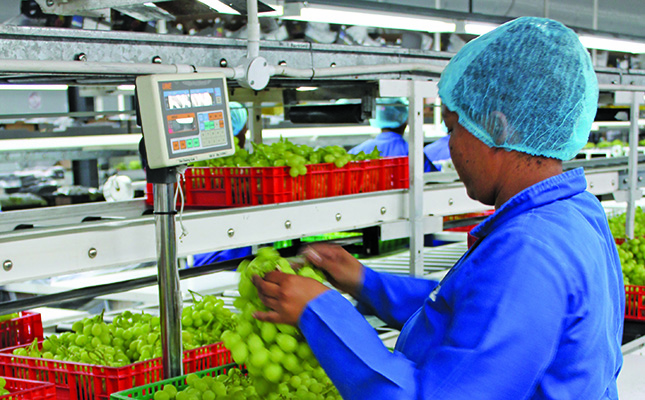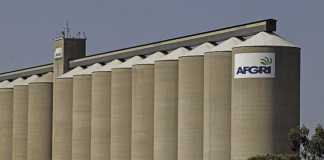
Photo: FW Archive
So-called ‘lean’ production is designed to minimise waste, improve operational efficiency, and increase profits for farms and agribusinesses. The approach has gained traction in recent years and is today widely implemented by progressive farmers and agribusinesses in Europe, the US and Asia. Applying lean agriculture could help SA’s farmers improve operational efficiency and become more competitive.
This is according to Susanne Pejstrup, an agronomist and founder of the Danish company, Lean Farming.
Pejstrup and others, extrapolating from experience gained elsewhere, believe that South Africa’s farmers would benefit significantly from implementing lean agriculture. The country’s producers have endured the region’s worst drought in decades, operate in a weak economy and are forced to deal with a depreciating currency. All of these have put considerable pressure on the sector, and farmers have been forced to cut costs to remain in business.
What exactly is Lean agriculture?
The lean approach includes aspects of precision farming. However, while the latter focuses on modern farming practices that improve production with tools such as weather mapping, soil temperature, and crop yield data analyses, lean farming emphasises the importance of labour.
Best described as a production system and management philosophy centred on creating more value with less work, lean agriculture’s success is dependent on creating a culture of continual improvement. This requires the buy-in of both farm management and workers. Farmers and agribusinesses have to train staff to identify wasteful activities and find ways in which to improve these practices.
Improvement is always possible
Pejstrup recommends that farmers start small. “Lean is not about big investments, but small, continual and numerous improvements of procedures and standards,” she explains. Developing a better way of storing fruit in a packhouse, for example, could reduce waste, thus increasing profitability.
She adds that South Africa’s severe drought should serve as an incentive to challenge conventional farming methods.
Pejstrup is convinced that all farmers, even those who are running a highly efficient business, can find ways of improving their operation.
She recently coached a dairy farmer on the principles of lean farming in his calf reproduction process. He had achieved a calf mortality rate of 0%, so was sceptical when she suggested further calf management improvements. Yet lean coaching led to further improvements in the management of calf weight.
In a separate consultation, a group of farmers discussed what to do after a tractor had driven into and damaged a gate; the goal was to prevent similar accidents in future. By applying lean farming principles, they decided that tractor drivers should receive better training and surface markings should be painted on the road to guide drivers.
“When you start to think and work systematically with lean farming you see opportunities for improvement everywhere. People start to work together,” says Pejstrup.
US dairy farm case study
A five-year study on nutrient management planning for dairies, conducted by Cornell University in the US, found that lean principles can also be used to develop a system to improve precision in nutrient management. The university’s Department of Animal Science conducted the study on US dairy farm, McMahon’s EZ Acres, to evaluate the impact of implementing methods to improve environmental and economic sustainability.
A critical component of the study was the development of plans for herd nutrient management. After assessing the cows’ nutrition, it was determined that their diets needed a higher percentage of forage. To accommodate the higher forage requirement, an additional 80ha planted to pasturage were required.
Better feeding management was also needed to ensure that the cows received the newly formulated diet. By implementing precision farming based on lean principles, the farm restructured its feeding systems, which included improving communication between feeders and management, developing feeder checklists and establishing routine feeding equipment maintenance schedules.
Improved forage production, diet quality, and storage techniques resulted in a 26% increase in animal numbers, a 9% increase in milk production per cow, a 48% decrease in purchased feed cost, and a 52% decrease in feed cost/kg milk sold.
The cows’ original diet had contained mainly lucerne as forage. However, as grass fitted the farm’s upland soil resources and use of manure nutrients, the amended diet included a higher percentage of grass forage, which prompted the farm to amend its hay crop storage system. Grass and lucerne were thus sorted and stored separately. While this required a capital investment, it improved feeding flexibility, which in turn improved feeding efficiency. Individual storage units also allowed maize silage to be packed in such a way that storage losses decreased from between 25% and 30% to between 18% and 20%.
Improving efficiency
Jan Erasmus, director at Organisation Development International, a management consulting firm specialising in productivity improvement, is a seasoned practitioner of lean principles. Erasmus believes that introducing lean principles in a farming operation is the only way to remain competitive.
Like Pejstrup, he emphasises that lean farming starts with the basics. While these actions might seem trivial, storing equipment properly, switching off unnecessary lights and implementing a filing system, for example, allow a farmer more time to identify other cost-wasting problems.
A way of life
Employee morale and feedback are major contributors to the lean operation’s success, according to Erasmus.
“Some of the best suggestions to cut waste in a business come from the people who are doing the job,” he says.He emphasises that farmers must do more to motivate workers and create a positive working environment, as employee engagement is crucial in lean farming.
“If farmers want to be competitive, they have to move away from using fear to get people to work harder. A good starting point is to give recognition for a job well done, and not only focus on disciplinary action if a worker is absent,” he advises.
Len Hansen, lean manufacturing consultant and the Astral Group’s former HR director, says farm management should schedule regular feedback sessions with workers. Sessions can include enquiring about the successes employees have noticed, and the areas that they believe require further improvement.
“I suggest that this time is used to source more suggestions. Ask employees to come prepared with three ideas of where existing procedures can be tweaked,” Hansen says.
He adds that the lean approach is a way of life, and a farm must adopt it as such in order for it to be successful. According to the Lean Enterprise Institute, the lean philosophy is not about reckless cost-cutting. Its purpose is to create value through the elimination of waste. As a farming operation improves its processes, it should reallocate productive resources to new value-creating work.
Phone Alysson Watt on 011 268 1859, or email her at [email protected].For more information on the McMahon case study, click here.
This article was originally published in the 6 May 2016 issue of Farmer’s Weekly.













